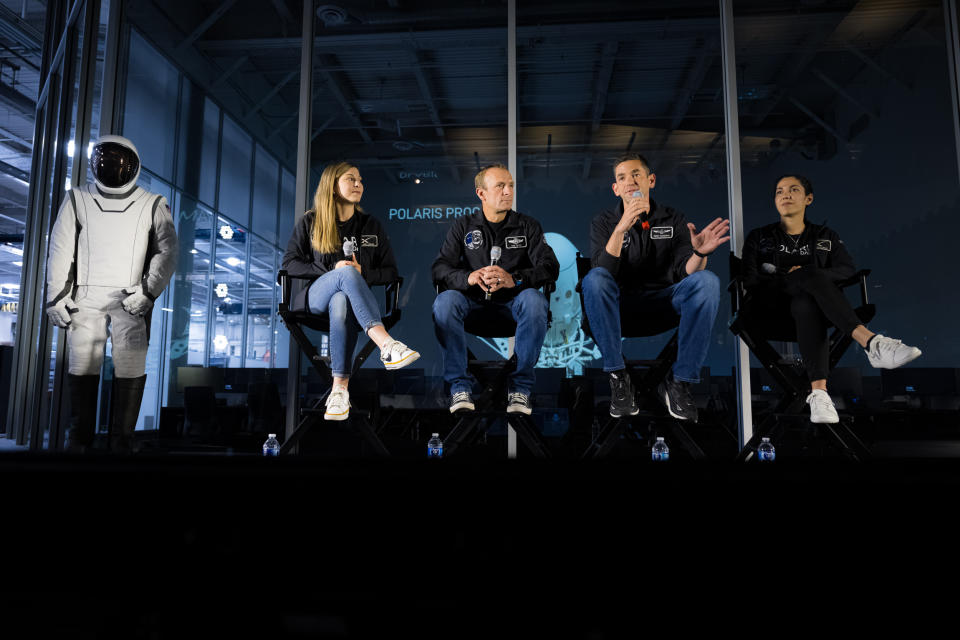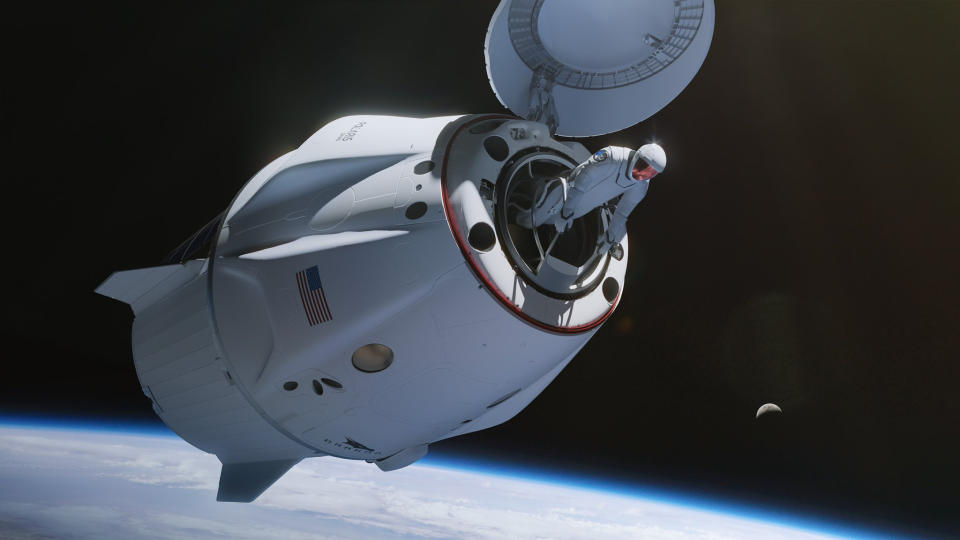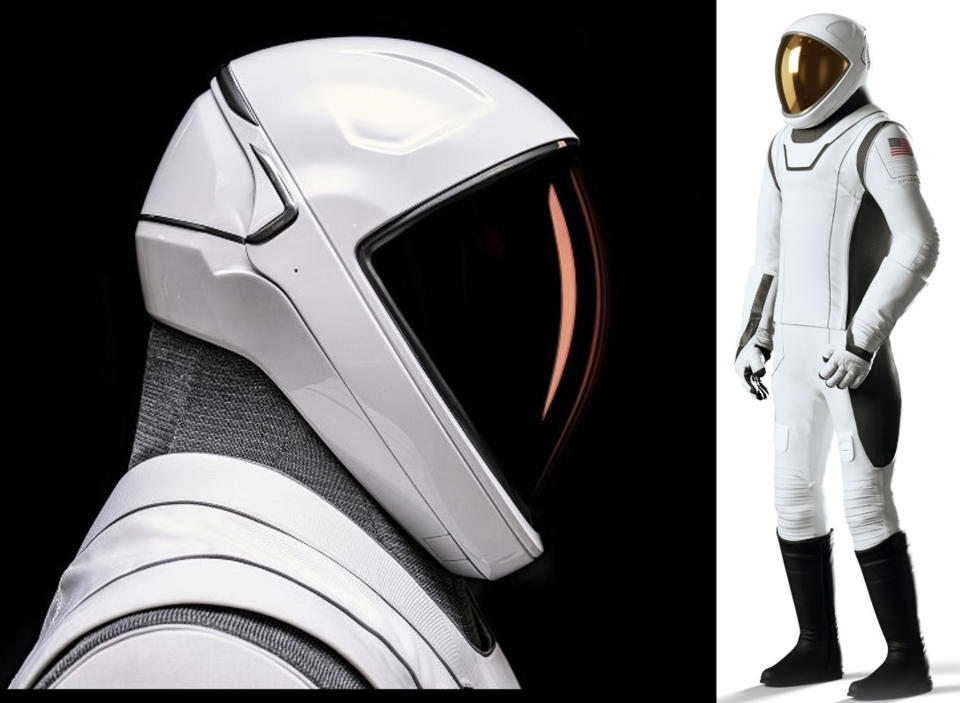SpaceX’s next private astronaut launch is slated for this summer, and a major key to its success has finally been revealed.
The mission, Polaris Dawn, is about to carry out the first extravehicular activity (EVA) tasks to be carried out by private astronauts, which means that SpaceX must build its own space suit that would be able to carry people would need to be worn to protect it from the harsh environment of space. Now, we’ve finally got our first look at the design.
The new suit was revealed on SpaceX’s website and social media channels on Saturday (May 4). The announcement that evening was accompanied by a “spaces” discussion with SpaceX engineers and Polaris Dawn crew members on X, formerly Twitter, purchased by SpaceX CEO Elon Musk in 2022.
Related: The Polaris Dawn crew prepares for the world’s 1st private spacewalk with SpaceX


SpaceX’s EVA suit looks a lot like the company’s IVA (in-vehicle activity) suit, which was designed to be worn inside spacecraft during launches and landings, but not in the vacuum of space. The new EVA suits feature material and joint improvements aimed at increasing the astronauts’ mobility while also protecting them from the cold, airless vacuum outside their spacecraft.
“A lot of work was done on both aspects of the suit – developing a whole new layer that we wanted to add for thermal management – as well as looking at the thermal condition for the team members themselves, and making sure they were at a comfortable temperature inside the suit,” said spacesuit team manager Chris Drake during the X discussion.
The suits also incorporate technology used in other parts of the SpaceX manufacturing gamut. “We have a lot of different resources available here,” Drake said. “There is some thermal material that we ended up using on the boot, which was actually developed for Falcon and Dragon, and is used on the interstage on Falcon, and on the trunk of Dragon.”
Drake also described a new heads-up display in the helmet design, which allows astronauts to see data about their suit’s internal temperature, humidity and pressure; A mission clock is also shown on the display to monitor the distances of individual EVA tasks. “Aesthetically, it might look like the IVA, but what they did under the hood is extraordinary,” said Jared Isaacman, Polaris Dawn mission commander, during the discussion. In collaboration with SpaceX, Isaacman is also funding the mission.
The billionaire funded and directed SpaceX’s commercial Inspiration4 mission in 2021, which was the first all-civilian space flight. For Inspiration4, outside of flight research, Isaacman was inspired to charter the flight in an effort to raise money for the St. Jude Children’s Research Hospital pediatric cancer research center.
Polaris Dawn, the first of three possible missions for Isaacman’s Polaris Program, is also raising money for St. Jude, and aims to take human spaceflight to a new level. “The Polaris program involves up to three missions,” Isaacman said Saturday, “culminating in the first crewed flight of a Starship.”
Related: Meet the four private Polaris Dawn astronauts SpaceX will launch into orbit this year


Isaacman will be joined on Polaris Dawn by retired US Air Force Lt. Col. Scott “Kidd” Poteet, who will serve as the mission pilot, and mission specialists Sarah Gillis and Anna Menon, both lead operations engineers at SpaceX. The quartet hope to push the limits of space travel with this flight, which will take them higher than anyone has flown since the last Apollo moon landing mission more than 50 years ago.
Menon described the mission’s flight profile and timeline during a May 4 discussion on X:
“We will basically be launching into a highly elliptical orbit where our perigee is at about 190 kilometers, but our apogee is at about 1,200 kilometers. Then, after several orbits, we will raise our apogee up to about 1,400 kilometers … The advantage of being at this high altitude is that we can better understand the effects of that environment – that higher radiation environment, for example – on the human body … as well as the spacecraft After several orbits there, we will complete all the research we had intended to do, and then lower our apogee back to a nice coastal orbit of about 700 kilometers, where We will complete the rest of our mission objectives including the spacewalk.”


Polaris Dawn will last five days, during which time the team plans to perform up to 40 experiments. For example, the team plans to capture X-ray images of radiation in the Van Allen Belts – ring-shaped belts of energetically charged particles around Earth – to investigate the mechanisms that cause motion sickness in space and hard- test items, including the new EVA suit and the Crew Dragon capsule itself.
Because the original Crew Dragon design does not have an airlock, the entire cabin must be depressurized for the crew to perform EVA tasks. As a result of this major modifications were made which enabled the inside of the capsule to withstand the hard vacuum. SpaceX also added a nitrogen repressurization system to complete the mission’s EVA duties. In addition, handrails and walkways were installed inside the spacecraft, and a ladder interface was implemented at the hatch opening to facilitate the astronauts’ passage.
Related Stories:
— The Polaris Dawn crew prepares for the world’s 1st private spacewalk with SpaceX
— Polaris Dawn crew training for SpaceX’s epic private mission
— Private SpaceX Polaris Dawn space crew talks about their ambitious mission (exclusive)
In addition to equipping each Polaris Dawn astronaut with an IVA flight suit as well as a new EVA suit, the team will also don SpaceX’s EVA spacesuit for launch and landing, as well as during the EVA mission.
“We will vacuum the cabin and then do an EVA operation where we hope to learn a lot about our suit and its operation,” Isaacman said, adding: “It’s the first commercial EVA. first time you don’t have government astronauts on such a mission to explore and build and repair things.
“And that means that the knowledge for spacewalks and EVAs has to go beyond the little that exists today.”